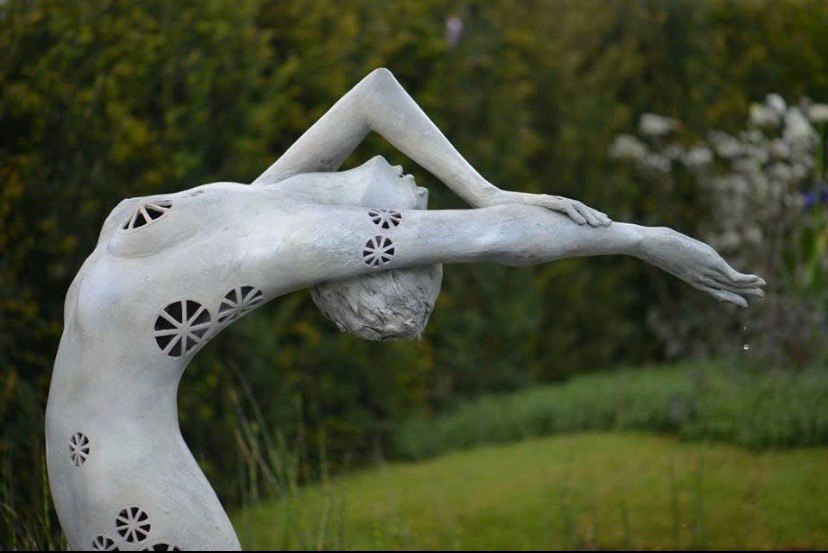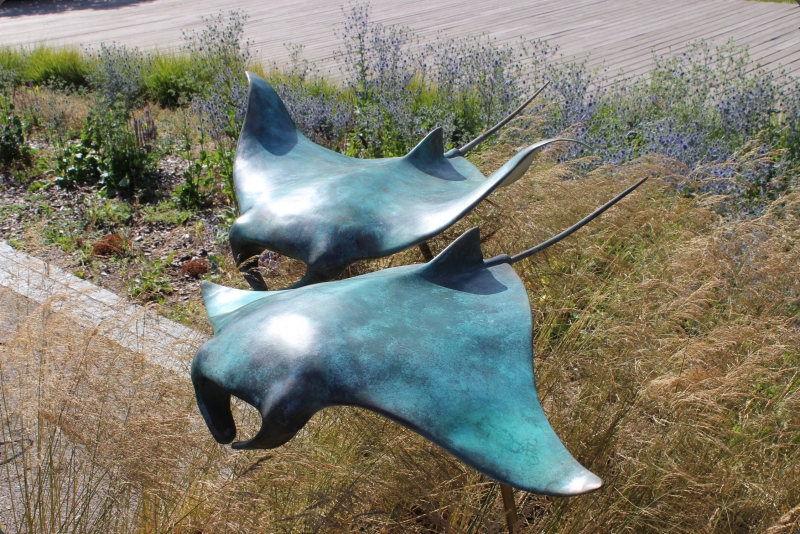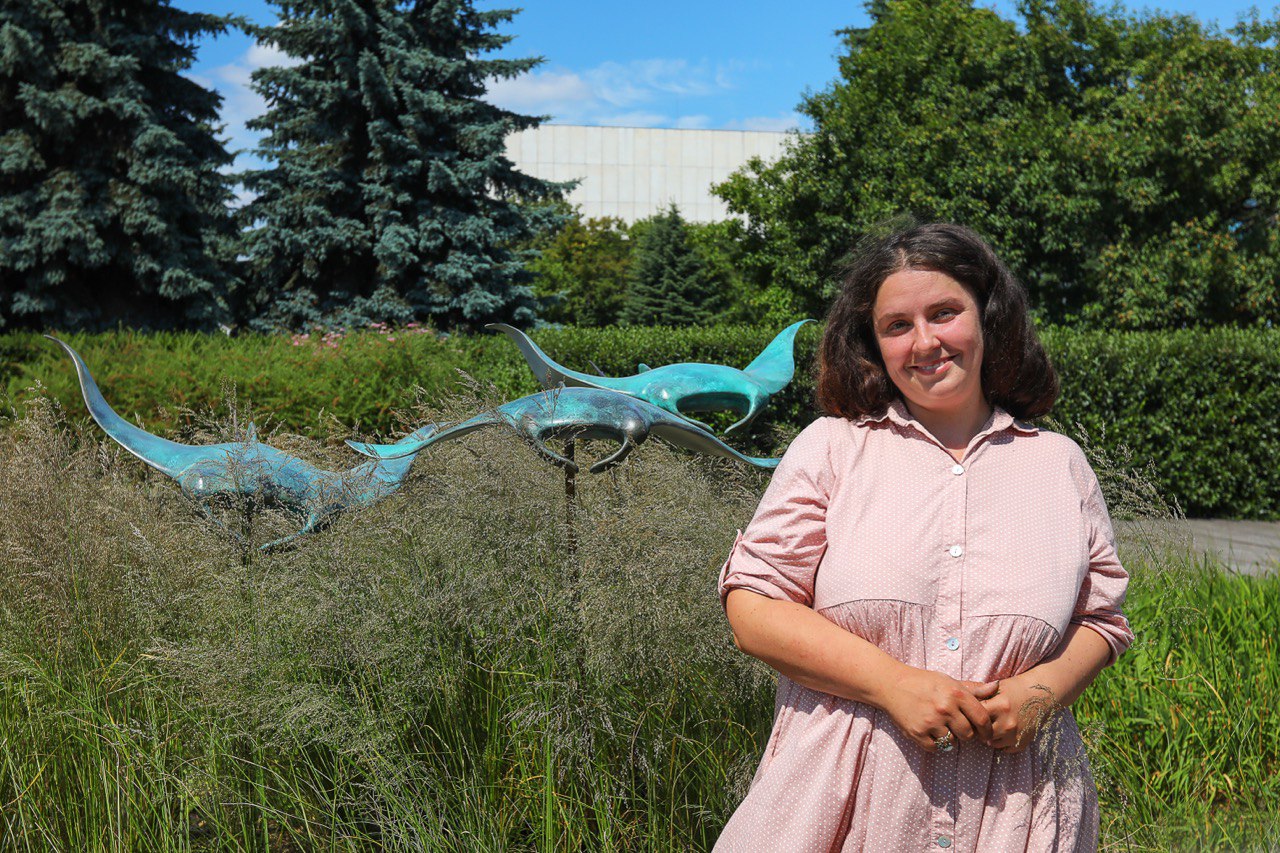By Maria Bregman, a London-based art critic, writer, and curator. She has curated solo exhibitions for Zurab Tsereteli, president of a leading national academy of arts, and her criticism has been published in outlets such as ArtCulture.UK, Afisha London, and international editions of ELLE and Esquire. A member of several professional writers’ and journalists’ unions, her own literary work has been recognised with multiple international awards.
This is not the silence in void but the silence filled with rich connections that reverberate across souls. Encountering the sculpture by Victoria Chichinadze will leave you with a moment you won’t soon forget. Our Culture Mag dives into the world of an artist who works magic with bronze turning sturdy metal into shapes that seem to dance like water and float like air. The works she creates don’t scream “look at me”; they simply exist, waiting for a moment of calm thinking which is hard to find. Chichinadze’s special way of blending natural curves with perfect skill breaks through that feeling. To see the back and forth happening in her unique pieces; the grand and majestic River of Time and the beautiful Stingrays is more than just seeing a conversation with the physical world. What she does is carve the true spirit of the land, the flow of things, and the passage of time, not limiting herself to shaping bronze.

In the well-kept beauty of the Chelsea Flower Show is where I came across the work known as River of Time. When it comes to gardens, sculptures are usually seen as mere pretty add-ons, almost treated as an afterthought. Yet Chichinadze’s work stood out completely defying this notion. In the middle of the garden the bronze sculpture stood out with its sleek lines and organic curves. Rising over the edge, a female figure crafted in bronze and so beautifully in bronze, with a unique matte finish that made it seem to blend seamlessly transforming into the flow of the cascading water. This isn’t just a statue on water’s edge but rather a figure that seems to be born from the very essence of the water, an ancient water nymph given life by the flowing current. The way this piece is put together is like a lesson in how to create a sense of movement and harmony through visuals. You can see how the graceful lines of the naked body mirror the way the ripples spread out in circles across the smooth surface of the water. A series of aluminium circles, empty in the middle, brings to mind the remains of an ancient round building. This symbolizes the idea that things are always coming back around. The statue looks like she’s dancing in a really beautiful way, but at the same time it feels like she’s not bound by time; she’s always there. Chichinadze has done an amazing thing blending the timeless beauty of classical anatomy with a deep sense of modernism.

If a River of Time is a song sung for the water around us then Stingrays acts as a heartfelt tribute to the invisible skies and the quiet yet vast journeys beneath the waves. In this new chapter Chichinadze leads us to a land not of waters but of land where decorative grasses seem to sway like the sea.
Several large bronze stingrays float, flying above this grassy area, their shapes look like they are not heavy at all. The illusion is breathtaking. Supported by slender, almost invisible posts, the heavy metal creatures are liberated from gravity, their powerful wings caught in a moment of effortless glide. The technical artistry is exquisite. The bronze has a special look that changes from a light green to a dark brown, like the way sunlight reflects on water. The movement of the grasses in the wind makes the stingrays themselves look like they are floating. The stingray, a sea animal that is often seen as wise and peaceful, represents a spirit of harmony and selflessness. To stand before them is to feel a sense of meditative calm, to be invited into a space where mass and lightness, earth and air, exist in perfect, poetic balance.
Context and Voice
To place Chichinadze’s work, it’s useful to see it next to some famous sculptors. Antony Gormley, for instance, also explores how people and animals connect to nature. But the comparison shows how different they are. Gormley’s figures are often simple shapes that assert a human presence in a place. Chichinadze, in contrast, does not try to make nature fit a certain shape, but to show the shape that is already there in nature. Her figures are organic and fluid; they are in conversation with the landscape, not in opposition to it.
You can also think of Barbara Hepworth, a pioneer who made abstract art and explored how mass and void interact. Hepworth was very good at making art that looked simple and clear. Chichinadze, who likes modern styles, still uses images that are easy to recognize, like a female figure or a fish. She is a storyteller, using these familiar forms to ground her ideas in an emotionally resonant reality. She works in a tradition of British artists like William Pye and David Harber, who are also masters of using water and nature in their art.
Chichinadze has a unique voice that is not just about making things look good, but also about telling stories with a sense of beauty and wonder. She proves that classicism, in the hands of a true master, can be radically contemporary.
River of Time and Stingrays are not just sculptures; they are experiences. A work of art is finished when it connects with its surroundings—like how light, water, and wind affect it. Maybe it is unusual to call a sculpture a poem, but these two works feel like one. They speak of how humans fit in nature, a visual poem with a quiet sound that lasts forever and has a strong, natural force.

